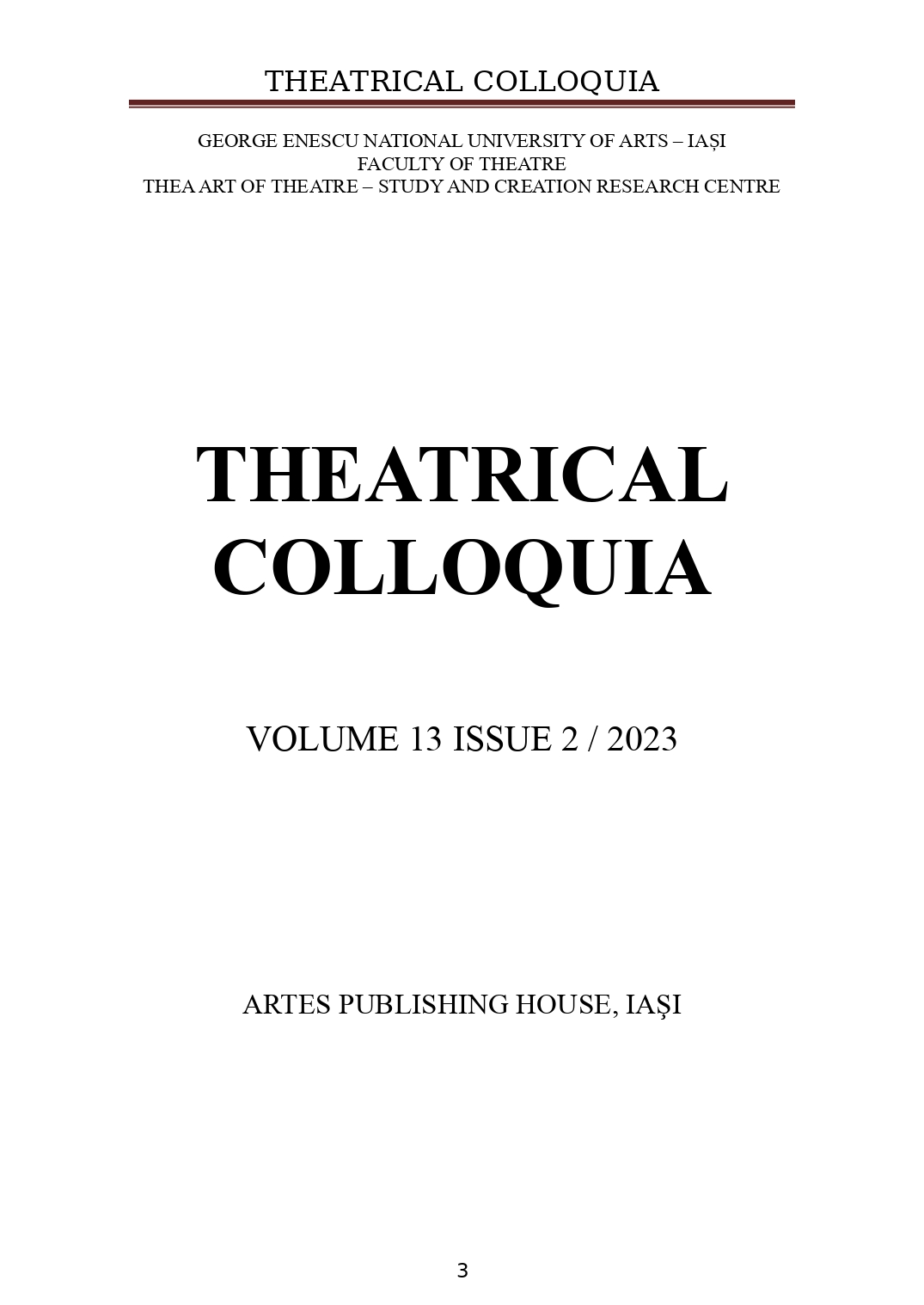Personal Perspective through Digital Art in Contemporary Theatre and Performance
Personal Perspective through Digital Art in Contemporary Theatre and Performance
Author(s): Alexandru TeodorescuSubject(s): Theatre, Dance, Performing Arts, Fine Arts / Performing Arts
Published by: Editura ARTES
Keywords: theatre; semiotics; performance studies; theatre directing; digital art;
Summary/Abstract: Using certain camera techniques and visual effects have been proven means of showing personal perspective in movies throughout the years. However, little research has been done with regard to such means of portraying a personal perspective in theatre. Therefore, we propose a theoretical study of the field, in order to outline previous work. Moreover, we will base our theoretical frame on three contemporary examples: (a) The encounter, directed by Simon McBurney, where the personal experience is shown through the use of aural effects and the audience closing and opening their eyes, creating a distancing or immersion effect; (b) Ubu Roy, directed by Declan Donnellan, where the personal perspective of the character is shown through a mix of digital and non-digital means, such as a first person camera and changing the movement-style of the actors; (c) The Loneliness of Stones, directed by Gelu Badea, in which the personal perspective is shown through projecting both abstract and non-abstract visual elements on stage, along with the use of a first-person camera. Through comparing these three productions which have very different aesthetics, we can better isolate the concrete instruments used by directors to change the perspective from an objective one to a subjective one in theatre. This procedure is harder in performance art than in film, due to the limitations of theatrical means. The conclusion of our presentation is that digital art is used in theatre to show the personal perspective of the characters, the cast and the directors. We argue that it is exactly because theatre has limited means of perspective-shift in comparison to film that theatre makers use technical and digital solutions for this specific staging need.
Journal: Colocvii teatrale
- Issue Year: 13/2023
- Issue No: 2
- Page Range: 133-143
- Page Count: 11
- Language: English

